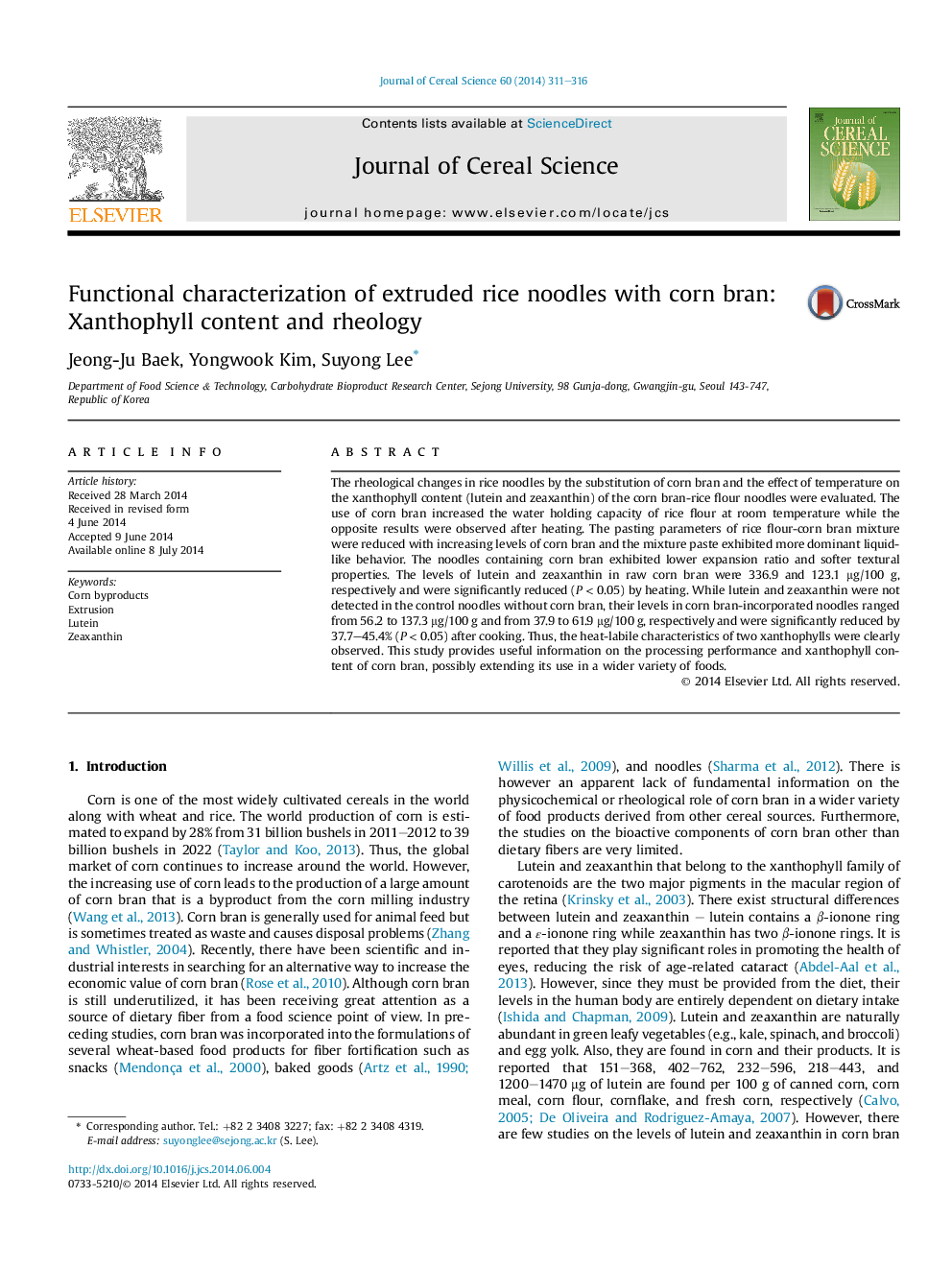| Article ID | Journal | Published Year | Pages | File Type |
|---|---|---|---|---|
| 4515843 | Journal of Cereal Science | 2014 | 6 Pages |
•Functional properties of extruded rice noodles with corn bran (CB) were characterized.•Two xanthophylls (lutein, zeaxanthin) in corn bran (CB) showed heat-labile properties.•CB reduced the pasting property of flour blend and lowered the paste viscoelasticity.•CB weakened the three-dimensional structural starch matrix of extruded rice noodles.•Cooking affected the xanthophyll content of CB and CB-rice noodles.
The rheological changes in rice noodles by the substitution of corn bran and the effect of temperature on the xanthophyll content (lutein and zeaxanthin) of the corn bran-rice flour noodles were evaluated. The use of corn bran increased the water holding capacity of rice flour at room temperature while the opposite results were observed after heating. The pasting parameters of rice flour-corn bran mixture were reduced with increasing levels of corn bran and the mixture paste exhibited more dominant liquid-like behavior. The noodles containing corn bran exhibited lower expansion ratio and softer textural properties. The levels of lutein and zeaxanthin in raw corn bran were 336.9 and 123.1 μg/100 g, respectively and were significantly reduced (P < 0.05) by heating. While lutein and zeaxanthin were not detected in the control noodles without corn bran, their levels in corn bran-incorporated noodles ranged from 56.2 to 137.3 μg/100 g and from 37.9 to 61.9 μg/100 g, respectively and were significantly reduced by 37.7–45.4% (P < 0.05) after cooking. Thus, the heat-labile characteristics of two xanthophylls were clearly observed. This study provides useful information on the processing performance and xanthophyll content of corn bran, possibly extending its use in a wider variety of foods.
